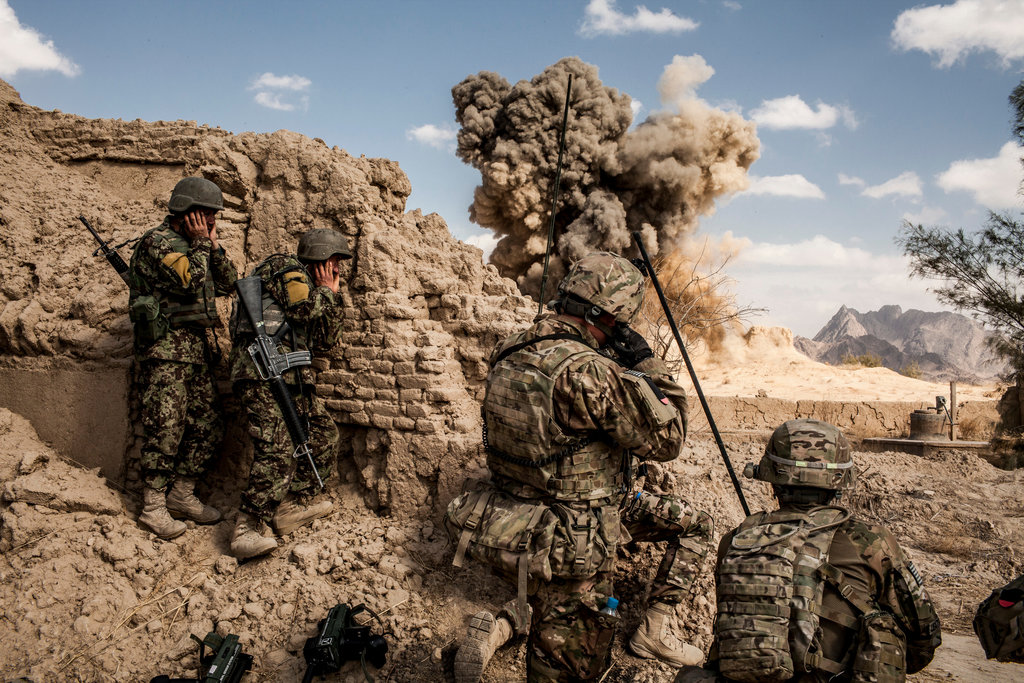Getting the Military’s Carbon Footprint Alone….

“This book describes a world peopled with young folk who have bypassed reading and writing and who thus have been forced to fabricate a life without the benefit of that innermost, intimate guide, the self. It does not take a powerful imagination to describe such a world. The details can be found in the morning newspaper. It is a world marked by pain and death, a world filled with despair and drop-outs, teen-age suicides, gang killings, broken homes, and homicides. It is a world in which young people seek revenge and retaliation rather than self-reflection. It is a world in which persons kill without remorse or regret.” — Barry Sanders, telling it like it is, almost a quarter of a century ago in A is for Ox.
They think I’m a nutcase, I’ll bet. And not just because of what I say to them, but because of the way in which my sense of urgency manifests in rapid speech and facial contortions from time to time. Time is getting short, though. And folks seem to be moving at the pace of an arthritic snail from my perspective.
When I tell educators, parents, neighbors — virtually anyone — that I have a sense of deadlines about addressing our collective crises in a fresh way (because we’re headed to go over the precipice if we don’t), I don’t think they get it. What they get, as a rule, is a hit of me as being out of my mind, I believe. In short, they don’t know what I’m talking about, as a rule.
I could give a couple of dozen examples of what’s taking us over the precipice — as I write — but I’ll underscore just one here in the hope that some reader will not only get what’s crucially important, but be the type of citizen who hasn’t given up on the Big Picture, and isn’t scared by the daunting odds facing us respecting our collective challenges.
The Green Zone: The Environmental Costs of Militarism by Barry Sanders is a must-read for members of both the peace and environmental movements. The arts community, too, will be awakened by the stunning images contributed by students of Pacific Northwest College of Art. Here is just a sample of the horrors that Sanders exposes, primarily from the wars in Iraq and Afghanistan:
Radiation poisoning
We fight conventional wars—not nuclear—right? Wrong.
- Most U.S. munitions are made with depleted uranium that leaves behind radioactive dust. Easily absorbed, the dust is responsible for alarming increases in deaths, cancers, birth defects and other medical problems among citizens in war-torn countries, as well as U.S. veterans. Indigenous wildlife endures similar impacts.
- Because of the long half-life of radioactive residue, the ecological destruction will continue for decades or centuries to come.
Air, soil and water contamination
- Fragile soils, agricultural lands and natural vegetation have been destroyed by the impact of heavy vehicles, or made unusable by firebombing, land mines and unexploded cluster bombs.
- Toxic chemicals from weapons, vehicles and military targets such as fertilizer plants pollute the air, fresh water supplies, and ocean habitats.
Energy use and carbon pollution
Ironically, while the U.S. military devotes much of its efforts toward insuring the flow of oil supplies, the institution itself is the world’s largest consumer of fuels:
- In military speak, fuel consumption is measured in “barrels per hour,” “gallons per minute,” and “gallons per mile.”
- The M-1 Abrams tank gets 0.2 miles per gallon; the Apache helicopter, 0.5; the Humvee, 4.0. The F-16 Fighter Jet uses 28 gallons per minute; the B-52 Stratocruiser, an astonishing 500 gallons per minute.
As Sanders demonstrates, if every aspect of the non-military sector instantly stopped generating greenhouse gases, the military’s carbon footprint alone will propel the world toward catastrophe.
“Indeed, if scientists are correct in telling us that we must reduce the burning of fossil fuels by seventy percent…then surely they must see the obvious: We must put a stop to war.”
That’s — absolutely — not impossible. And if anyone takes the time to get off of their treadmill, I’ll gladly and easily go through the steps we can take to move in a healthy direction on that score.
I have deep respect for people who have a different “pace” than I do… in a general sense. But that’s not germane here. The fear is that folks aren’t seeing the obligation they have at present. Not getting the notion that something fresh has to be done post haste, and not acknowledging that if they expect someone else to do the work, they’ll be wasting the little time we have left to prevail.
It is a lonely moment, yes. But lovely too, the opportunity.
Rachel Oxman put this piece together with the invaluable help of Dr. Pat Daniel of Vermont’s Engaging Peace. Truth be told, the lion’s share of this contribution must be attributed to The Wizard of Ease, Pat, and the inspiration provided by Professor Sanders, whose A is for Ox: The Collapse of Literacy and the Rise of Violence in an Electronic Age is must-reading for anyone teaching reading… for anyone teaching or parenting these days at all.
https://countercurrents.org/2018/04/05/getting-the-militarys-carbon-footprint-alone/

0 Comments:
Post a Comment
Subscribe to Post Comments [Atom]
<< Home